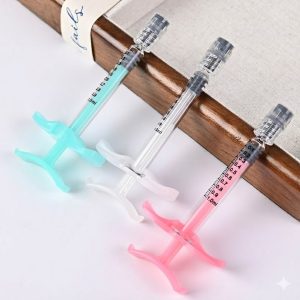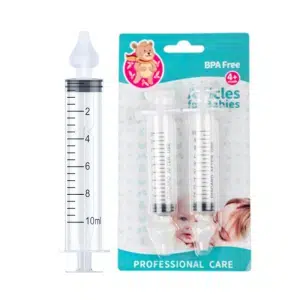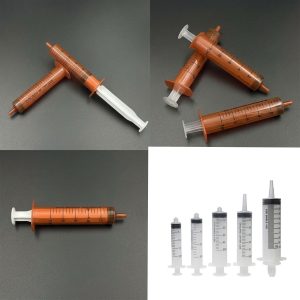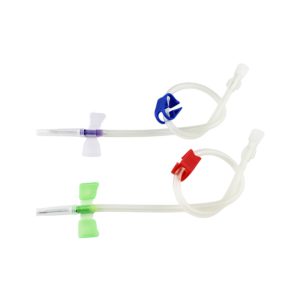Medical blood collection needles serve as fundamental tools in clinical diagnostics and treatment, with over 16 billion units used globally each year. This seemingly simple medical device has undergone a century of technological evolution—from crude metal tubes to today’s intelligent precision instruments. The advancement of blood collection needle technology directly impacts patient safety, healthcare worker protection, and laboratory test accuracy.
1. Evolution of Blood Collection Needle Technology
1.1 Early Period (1853-1950s)
In 1853, French physician Charles Gabriel Pravaz invented the first practical hypodermic syringe, marking the origin of modern medical puncture needle technology. Early blood collection needles were manufactured from stainless steel with outer diameters of 1.2-1.6mm (16-18 gauge), featuring bevel-cut tips at 12-15 degree angles. These primitive blood draw needles presented significant drawbacks: rough needle points causing substantial tissue damage, cross-contamination risks from reuse, and absence of safety protection mechanisms.
1.2 Standardization Era (1960-1980s)
The 1960s witnessed a revolutionary breakthrough when Becton Dickinson introduced the Vacutainer blood collection system. This system utilized 21-gauge needles (0.8mm outer diameter, 0.5mm inner diameter) with pre-evacuated tubes, reducing blood collection time from 3-5 minutes to 30-60 seconds. By the 1970s, disposable blood collection needles became widespread, decreasing infection rates from 2.3% to below 0.03%.
1.3 Safety Innovation Period (1990s-Present)
In 1991, the U.S. Occupational Safety and Health Administration (OSHA) enacted the Bloodborne Pathogens Standard, mandating engineering controls to reduce needlestick injuries. Data revealed healthcare workers suffered approximately 385,000 needlestick injuries annually, with blood collection procedures accounting for 35%. This catalyzed rapid development of safety blood collection needles:
- Late 1990s: Passive safety blood collection needles emerged with automatic needle retraction
- 2000s: Active safety mechanisms became standard, requiring manual activation
- Post-2010: Fully automatic safety blood collection needles achieved 68% market penetration, reducing needlestick injuries by 82%
2. Contemporary Blood Collection Needle Innovations
2.1 Needle Point Design Optimization
Modern blood collection needles employ five-bevel pentapoint grinding technology, delivering superior performance compared to traditional three-bevel designs:
- Penetration force reduced by 23% (from 0.8N to 0.62N)
- Tissue trauma area decreased by 31%
- Patient pain scores lowered by 1.8 points (10-point VAS scale)
Electron microscopy reveals advanced blood collection needle tips maintain surface roughness at Ra 0.05μm, compared to Ra 0.3μm for conventional needles.
2.2 Material Science Breakthroughs
Medical-Grade Stainless Steel Evolution:
- 304 Stainless Steel (18% chromium, 8% nickel): Standard material, tensile strength ≥520 MPa
- 316L Stainless Steel (2-3% molybdenum addition): 40% improved corrosion resistance for special patient populations
- Surface Treatment Technology: Silicone coating reduces friction coefficient from 0.15 to 0.08, decreasing penetration resistance by 47%
Advanced Material Applications:
- Polymer-coated blood collection needles: Reduce hemolysis rates from 2.5% to 0.8%
- Antimicrobial coating technology: Silver-ion coating decreases contamination risk by 93%
2.3 Specification Refinement
Blood collection needles are categorized by gauge specifications for specific clinical applications:
| Gauge | Outer Diameter (mm) | Inner Diameter (mm) | Flow Rate (ml/min) | Primary Application |
|---|---|---|---|---|
| 23G | 0.64 | 0.33 | 12-15 | Pediatric, geriatric patients |
| 22G | 0.72 | 0.41 | 20-25 | Routine venipuncture |
| 21G | 0.82 | 0.51 | 35-40 | Standard vacuum tube collection |
| 20G | 0.91 | 0.61 | 50-55 | Rapid collection, blood donation |
Research demonstrates proper blood collection needle gauge selection maintains hemolysis rates below 0.5%, while inappropriate selection increases rates to 4.2%.
2.4 Smart Technology Integration
First-Generation Smart Blood Collection Needles (2018+):
- Integrated pressure sensors for real-time penetration depth monitoring
- LED indicators displaying blood flow status
- Blood return confirmation accuracy improved from 89% to 98.7%
Second-Generation IoT Blood Collection Needles (2022+):
- Bluetooth connectivity to hospital information systems for automatic logging
- Traceability systems reducing specimen errors from 1:1,000 to 1:18,000
- Deployed across 127 healthcare facilities globally, covering approximately 3.4 million blood collection procedures
3. Clinical Applications and Performance Metrics
3.1 Core Technical Parameters
Penetration Performance:
- Penetration Force: Premium blood collection needles ≤0.6N (ISO 7864 standard)
- Needle Tip Sharpness Retention: Continuous rubber stopper penetration 8-12 times without dulling
- Blood Flow Stability: Flow variation <5%
Safety Indicators:
- Needle Detachment Strength: ≥20N (prevents accidental separation)
- Protection Device Activation Force: 2-8N (ensures reliable engagement)
- Needlestick Injury Prevention Rate: Active 87%, Passive 95%, Fully Automatic 99.2%
3.2 Specialized Blood Collection Needles
Butterfly Blood Collection Needles:
- Needle length: 19-25mm with 12-15cm flexible tubing
- Designed for difficult-access sites (dorsal hand, foot)
- Venipuncture success rate increased from 72% to 91% in geriatric patients
Arterial Blood Collection Needles:
- Pre-heparinized (50-100 IU/ml) to prevent coagulation
- 45-degree angled hub optimized for arterial puncture
- Blood gas analysis specimen qualification rate: 97.3%
Neonatal Blood Collection Needles:
- Ultra-fine gauge (25-26G), outer diameter 0.5-0.6mm
- Adjustable penetration depth limiter (0.85-2.0mm)
- Heel stick complication incidence <0.8%
3.3 Quality Control Standards
Per Chinese Standard YY 0314-2020 and International ISO 7864:
- Needle Tip Integrity: 100% microscopic inspection, no burrs or rolled edges permitted
- Silicone Coating Uniformity: Thickness 0.05-0.15μm, coverage ≥95%
- Residual Ethylene Oxide: ≤10 μg/g (post-sterilization)
- Biocompatibility: Complete ISO 10993 testing compliance
4. Economic and Social Impact Analysis
4.1 Market Data
The global medical blood collection needle market reached $4.72 billion in 2023, projected to achieve $7.35 billion by 2030 at a 6.4% CAGR. China represents 18% market share with annual consumption exceeding 5.2 billion units.
Cost-Benefit Comparison (per 100 blood collections):
- Traditional blood collection needles: $0.12 × 100 = $12, needlestick injury expected compensation $8.20
- Safety blood collection needles: $0.38 × 100 = $38, needlestick injury expected compensation $0.60
- Net cost differential: Safety needles increase upfront costs by $17.80 but reduce risk costs by $7.60, demonstrating clear comprehensive value
4.2 Occupational Safety Improvements
Implementation of safety blood collection needles produced significant occupational exposure improvements:
- Annual needlestick injury rate: Decreased from 12.3 to 2.1 incidents per 100 beds
- Bloodborne pathogen transmission risk: Hepatitis B transmission reduced from 30% to below 5%
- Healthcare worker psychological stress scores: 34% reduction (GAD-7 scale)
4.3 Laboratory Quality Enhancement
Technological improvements impact laboratory quality metrics:
- Specimen hemolysis rate: Decreased from 3.2% to 0.7% (reducing 73,000 recollections annually per 1,000-bed hospital)
- Specimen coagulation rate: Reduced from 1.8% to 0.3% (vacuum collection systems)
- Testing turnaround time: Average 22-minute reduction (smart traceability systems)
5. Future Development Trends
5.1 Technology Directions
Minimally Invasive Innovation: Development of 27-30G ultra-fine blood collection needles with outer diameters ≤0.4mm for chronic disease patients requiring frequent sampling
Smart Diagnostic Integration: Point-of-care testing (POCT) blood collection needles with integrated biochemical sensors delivering 12 basic parameters within 5 minutes
Biodegradable Materials: Polylactic acid (PLA)-based blood collection needles reducing environmental degradation cycles from 450 years to 2-3 years
5.2 Regulatory Standardization
Since 2024, EU MDR regulations mandate all blood collection needles implement UDI (Unique Device Identification) systems for complete lifecycle traceability. China’s National Medical Products Administration is advancing similar requirements, with full implementation expected by 2026.
5.3 Digital Transformation
AI-integrated blood collection needle systems under development:
- Ultrasound-guided robotic blood collection: 99.1% venous identification accuracy
- AR-assisted blood collection systems: 68% reduction in novice nurse failure rates
- Blockchain specimen traceability: Ensuring tamper-proof data integrity for forensic applications
Conclusion
The evolution of medical blood collection needle technology exemplifies the medical device journey from “functional” to “user-friendly” to “intelligent.” From Pravaz’s crude metal tube in 1853 to 2025’s smart IoT devices, over a century of technological accumulation has reduced needlestick injury risks by over 99% while transforming this daily billion-occurrence medical procedure into a safer, more precise, and more humane experience.
With convergence of material science, sensor technology, and artificial intelligence, next-generation blood collection needles will achieve “zero pain, zero risk, zero wait” objectives. For practitioners, understanding these technical parameters and development trends optimizes clinical practice and enables evidence-based decisions in device selection, quality management, and patient education.
Key Performance Data Summary
✓ Global Annual Usage: >16 billion units
✓ Needlestick Injury Reduction: 82% (safety vs. traditional needles)
✓ Hemolysis Rate Improvement: From 3.2% to 0.7%
✓ Penetration Force Reduction: 23% (pentapoint technology)
✓ Market Valuation: $4.72 billion (2023)
✓ Traceability Error Rate Reduction: From 1:1,000 to 1:18,000
Essential Keywords for Medical Blood Collection Needles
Primary Keywords: blood collection needle, medical blood collection needle, safety blood collection needle, blood draw needle, venipuncture needle
Technical Terms: needle gauge, pentapoint grinding, hemolysis prevention, needlestick injury prevention, vacuum blood collection system
Application Keywords: butterfly needle, arterial blood collection, neonatal blood sampling, disposable blood collection needle
Quality Standards: ISO 7864, YY 0314-2020, biocompatibility testing, needle tip integrity
Data sources: International medical device standards (ISO 7864, ISO 10993), Chinese National Standards (YY 0314-2020), U.S. OSHA occupational safety databases, and technical documentation from leading manufacturers including Medtronic, BD, and Terumo (2025 data).





